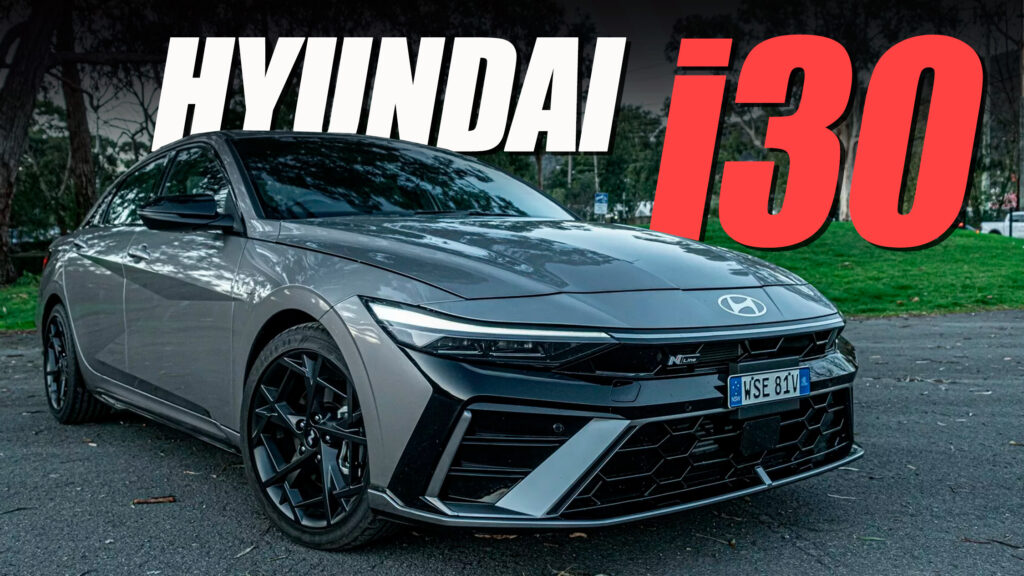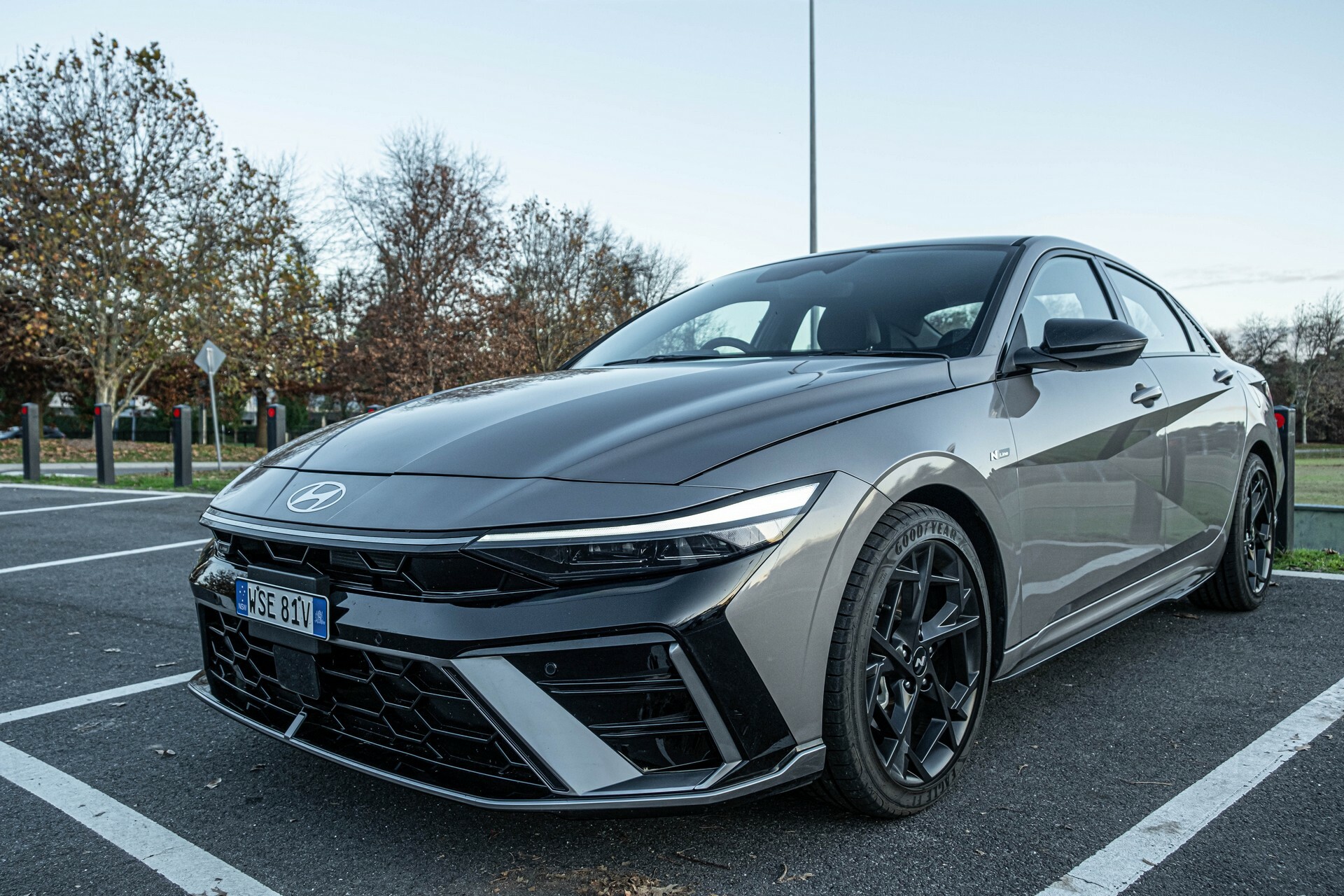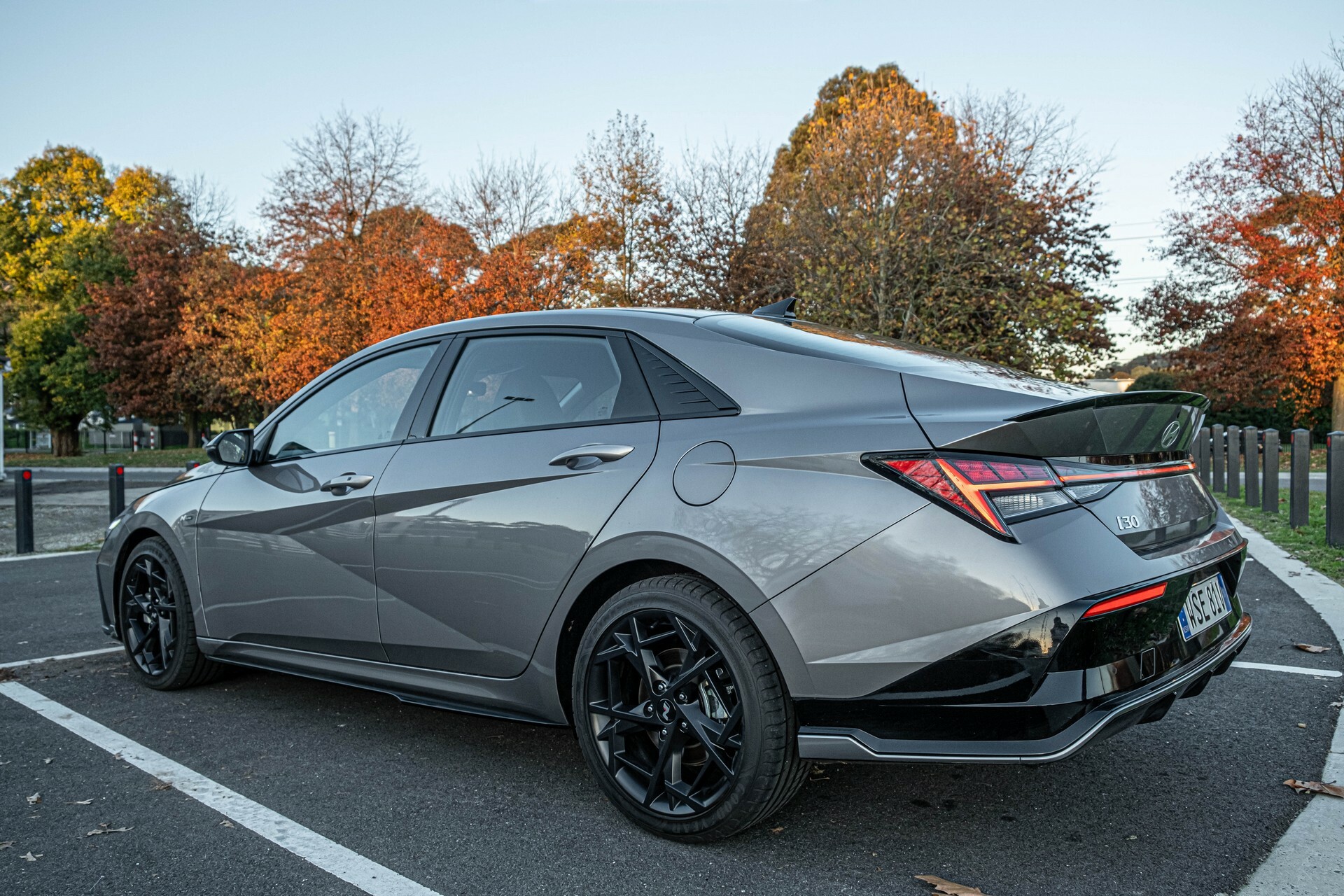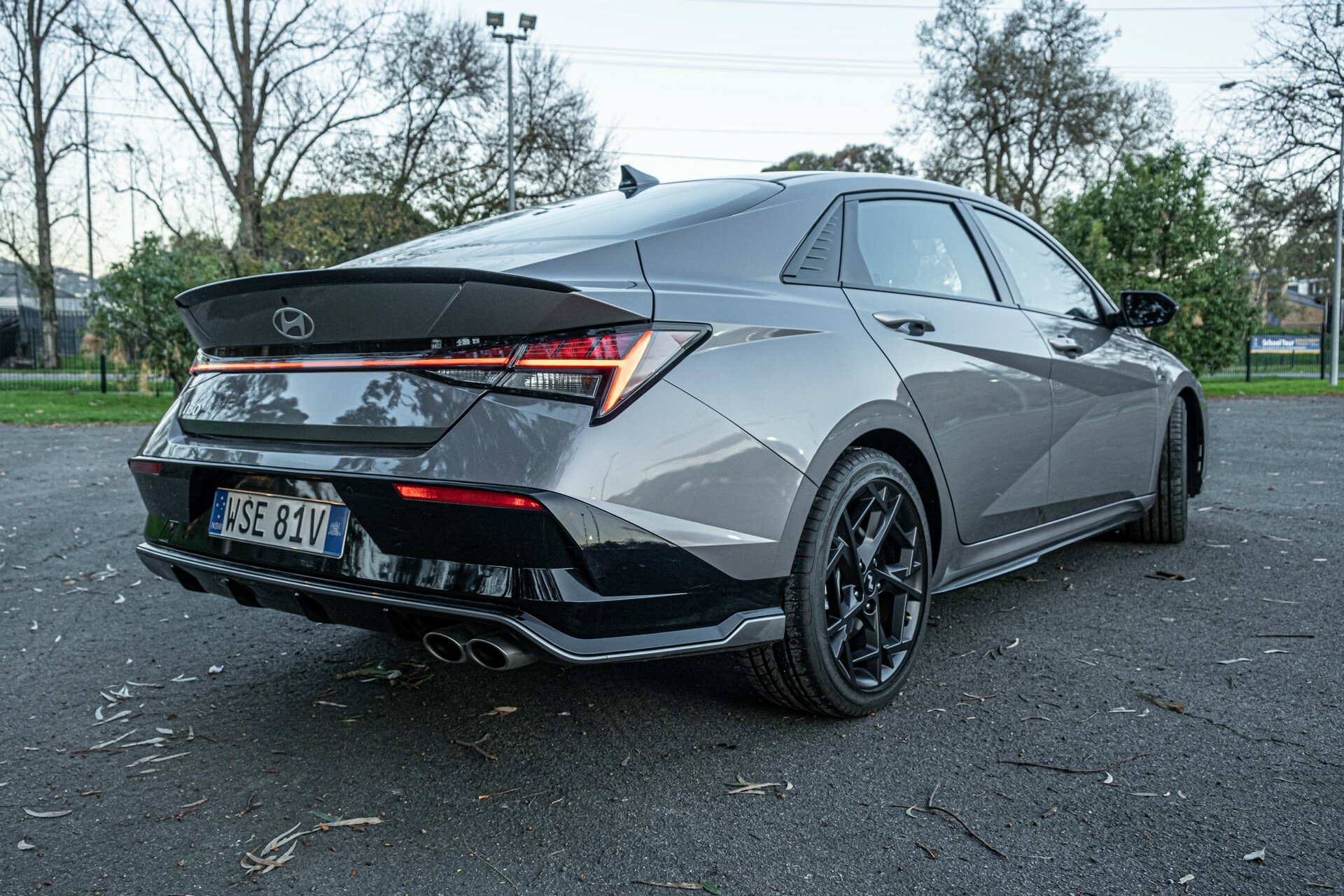A decade ago in Australia, it was possible to walk into a Hyundai dealership and buy a brand-new Elantra for AU$20,000 (~$13,300). While those days are long gone, the facelifted 2024 i30 Sedan still represents good value for money and, in N Line guise, is particularly appealing.
The current-generation i30 Sedan has been sold in Australia since early 2021. It’s essentially identical to the Elantra sold in other markets but has been renamed, likely because Aussies are more familiar with the i30 name than they are with Elantra. When we drove it in 2021, we were thoroughly impressed and after recently spending a week in the 2024 model, would recommend it to anyone looking for a ‘budget’ sedan.
Quick Facts
An i30 for everyone
The updated i30 Sedan range starts at AU$29,000 (~$19,300) for the base model with the 2.0-liter naturally-aspirated four-cylinder or AU$33,000 (~$22,000) for the new 1.6-liter turbocharged hybrid. The range then grows with the i30 Sedan Elite priced from AU$33,500 (~$22,300) for the 2.0-liter, and AU$38,500 (~$25,600) for the i30 Sedan Premium. Sitting between these two models is the version we lived with, the AU$36,000 (~$24,000) i30 Sedan N Line.
Those willing to stretch their budget a little further will need to cough up AU$41,500 (~$27,600) for the i30 Sedan N Line Premium. That’s the flagship model of the standard range and only sits below the potent AU$52,000 (~$34,600) i30 Sedan N Premium, one of the finest hot sedans at its price point.
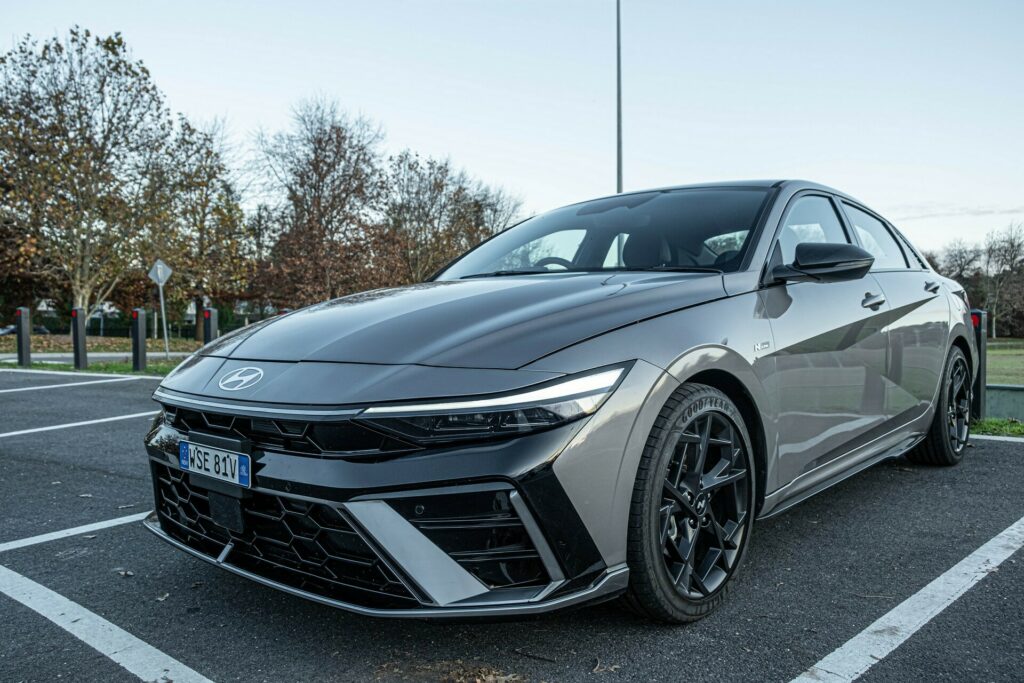
Alterations made to the 2024 model aren’t significant and are focused mainly on the exterior. The front end adopts a set of slimmer and more attractive headlights while there’s now an LED light bar stretching between them. The shape of the front bumper has also been modified and looks slightly more aggressive than the model it replaces. Hyundai’s new flat badge can also be found upfront.
A pleasant and premium cabin
Little has been done to the inside of the 2024 sedan, but that’s no bad thing. When I first drove the i30 Sedan a few years ago, I was impressed with the build quality and the fit and finish of the cabin, considering the car’s starting price. The same can be said of the current model.
The seats of the pre-facelift model have been carried through to the new one, offering good bolstering and are soft to the touch. However, the angle of the seat bases means they offer very little under-thigh support for tall drivers. Not even a square inch of my thighs were touching them when I was driving. I could only rest my thighs on the seats if I stretched out my legs behind the pedals, which isn’t safe.
Photo Credits: Brad Anderson/Carscoops
Positioned ahead of the driver is a N-branded steering wheel wrapped in black leather with red contrast stitching and plenty of physical buttons and switches for the cruise control and media settings. There’s also a large digital instrument cluster.
As our test car was the entry-level N Line and not the N Line Premium, it made do with an 8.0-inch infotainment display as opposed to the 10.25-inch display of the higher-end version. This display offers Apple CarPlay and Android Auto support but runs an old version of the Korean brand’s software, voiding many features and settings of other Hyundai models. It’s one of the most basic infotainment systems we’ve used in recent years and was a disappointment.
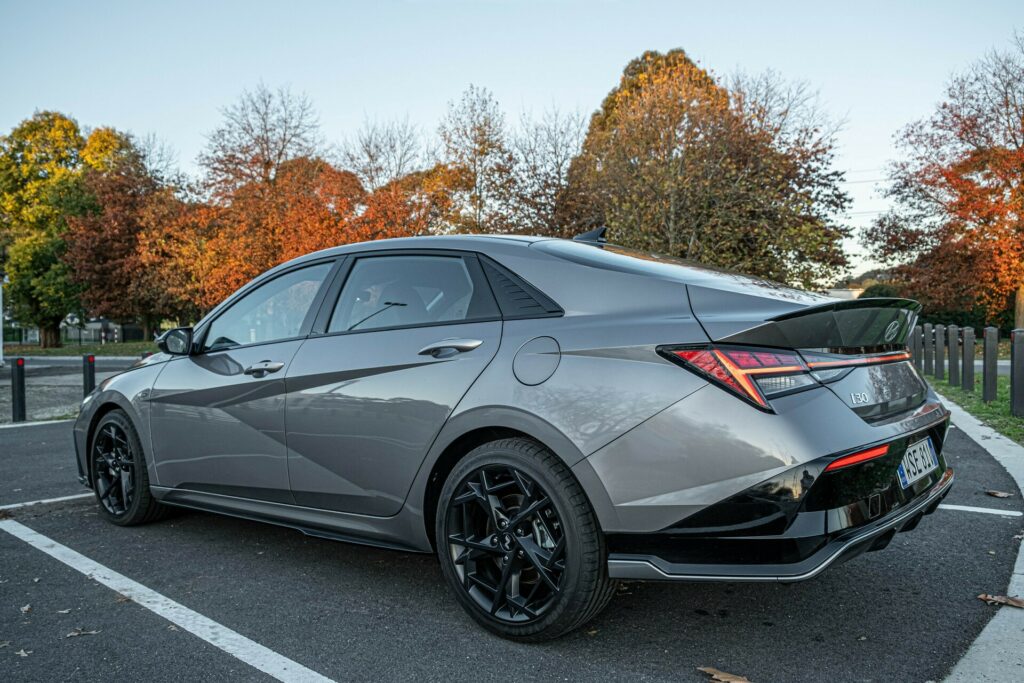
The driving position is excellent (except for the thigh issue), and there’s enough headroom for taller occupants up front. The rear is slightly more cramped than the Mazda3 Sedan we tested recently, but it’s more than large enough for kids and teens (as long as they don’t have big feet). The 2024 model also includes a pair of USB-C ports at the rear.
The quality of the materials used in the i30 Sedan’s cabin doesn’t feel quite as nice as those of the Mazda3 Sedan, but this car’s Japanese rival starts at almost AU$2,000 (~$1,300) more and tops out at AU$47,147 (~$31,300), not far off the performance-focused i30 N Sedan. Where the i30 Sedan has the Mazda3 beat is in luggage space, as the boot can swallow up 474 liters (16.7 cubic-feet), 30 liters (1 cubic foot) more than the Mazda. The Hyundai also has a slightly larger aperture and lower loading point, making it easier to load things in and out.
Photo Credits: Brad Anderson/Carscoops
A comfortable ride but an unrefined powertrain
Power comes courtesy of a 1.6-liter turbocharged four-cylinder. This engine is good for 150 kW (201 hp) at 6,000 rpm and 265 Nm (195 lb-ft) of torque between 1,500 rpm and 4,500 rpm, figures identical to the pre-facelift model. Coupled with this engine is a seven-speed dual-clutch automatic transmission driving the front wheels.
I was pleasantly surprised with how much punch the N Line provides. It has slightly more grunt than the 139 kW (186 hp) and 252 Nm (186 lb-ft) of the Mazda3 G25, and you can feel this extra poke, although the differences are only slight.
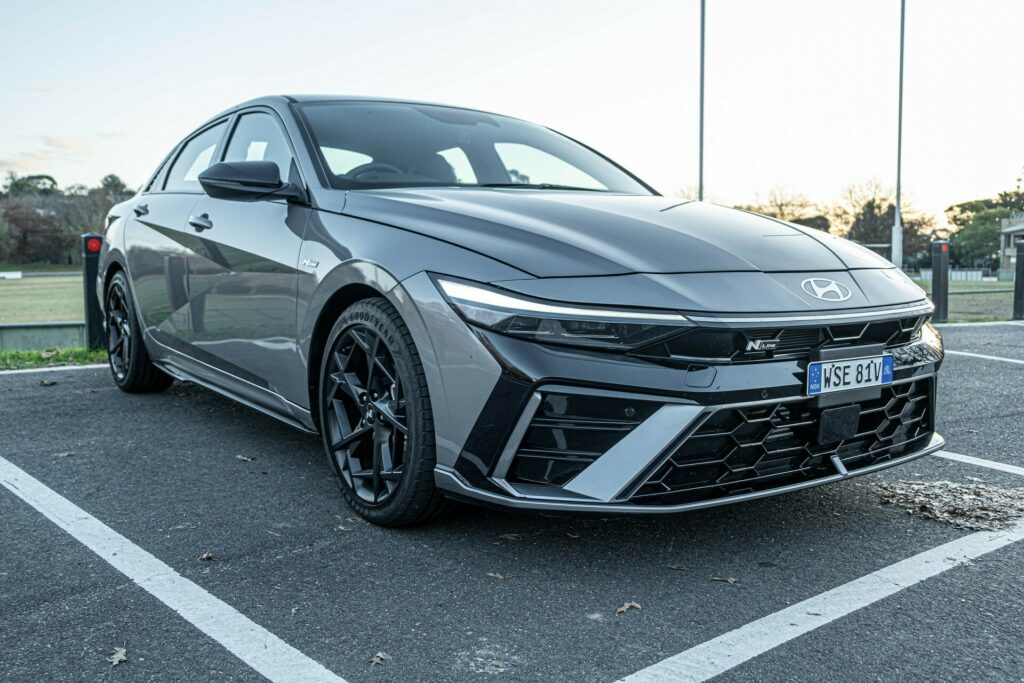
Unfortunately, the engine doesn’t sound as nice as the one in the Mazda. It makes quite an unpleasant racket at high revs. The car also experiences a lot of torque steer, which is strange given it doesn’t have that much power for a front wheel drive car. If you pin the throttle with the steering wheel turned even slightly, the latter will tug, and the inside tire will start to lose traction.
Fortunately, the i30 Sedan N Line is impressively frugal. Hyundai claims it sips 6.6 l/100 km (35.6 U.S. mpg) over the combined cycle and on long highway jaunts, that’s exactly what we averaged with 98 octane fuel. On the same roads, but filled with 95 octane fuel, consumption increased to 6.9 l/100 km (34 U.S. mpg). We also experimented with 91 octane fuel over the same highway roads and averaged 7.2 l/100 km (32.6 U.S. mpg).
Review: 2024 Mazda3 G25 Astina Sedan Feels A Class Above
Hyundai has done an excellent job with tuning the car’s suspension. It remains soft and compliant along the roughest road surfaces and the Goodyear Eagle F1 Asymmetric 2 tires of our test car also provided a huge amount of grip.
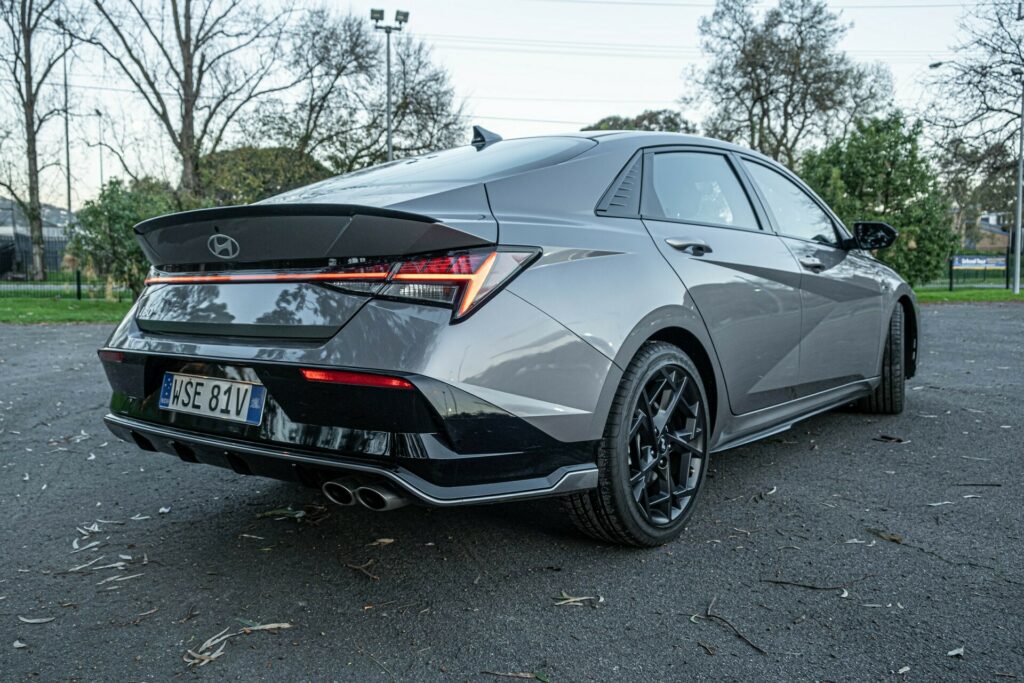
During our time with the car, we embarked on a near-1,400 km (~870 mile) roundtrip from Victoria into New South Wales and back, allowing us to test it along heaps of different roads at different speeds.
Urban driving is ace. While the N Line doesn’t offer the same kind of performance as a legitimate hot hatch, it still has plenty of get-up-and-go. The steering is well-weighted and provides solid feel. The seven-speed dual-clutch also shifts through the gears quickly and smoothly, although it can feel a little unrefined at slower speeds.
On the highway, the i30 Sedan remains composed and comfortable during long stints. It comes standard with the Hyundai SmartSense system, which includes lane-keeping assist, rear-cross traffic collision avoidance, and, most importantly, active cruise control with a stop & go functionality. The active cruise control system is easy to use, and the lane-keeping assist keeps the i30 perfectly centered in the lane. Interestingly, the flagship i30 Sedan N misses out on active cruise control because of the option of a six-speed manual.
Verdict
The closest rival to the i30 Sedan that we’ve driven in recent months is the Mazda3 Sedan. It starts at AU$32,990 (~$22,000) and tops out at AU$47,147 ($31,386), making it slightly more expensive than the Hyundai. The Mazda cabin feels nicer, but of the two, the i30 sedan is the more exciting to drive, particularly in N Line guise. Buyers would be wise to test out both to see which they prefer.



